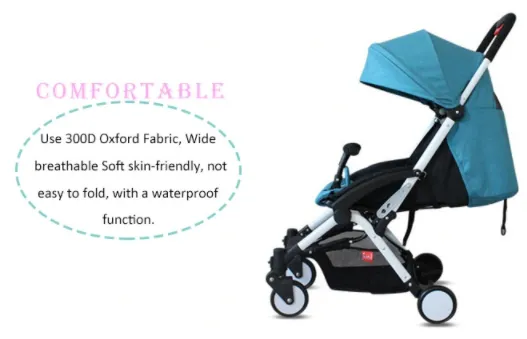
- Afrikaans
- Albanian
- Amharic
- Arabic
- Armenian
- Azerbaijani
- Basque
- Belarusian
- Bengali
- Bosnian
- Bulgarian
- Catalan
- Cebuano
- Corsican
- Croatian
- Czech
- Danish
- Dutch
- English
- Esperanto
- Estonian
- Finnish
- French
- Frisian
- Galician
- Georgian
- German
- Greek
- Gujarati
- Haitian Creole
- hausa
- hawaiian
- Hebrew
- Hindi
- Miao
- Hungarian
- Icelandic
- igbo
- Indonesian
- irish
- Italian
- Japanese
- Javanese
- Kannada
- kazakh
- Khmer
- Rwandese
- Korean
- Kurdish
- Kyrgyz
- Lao
- Latin
- Latvian
- Lithuanian
- Luxembourgish
- Macedonian
- Malgashi
- Malay
- Malayalam
- Maltese
- Maori
- Marathi
- Mongolian
- Myanmar
- Nepali
- Norwegian
- Norwegian
- Occitan
- Pashto
- Persian
- Polish
- Portuguese
- Punjabi
- Romanian
- Russian
- Samoan
- Scottish Gaelic
- Serbian
- Sesotho
- Shona
- Sindhi
- Sinhala
- Slovak
- Slovenian
- Somali
- Spanish
- Sundanese
- Swahili
- Swedish
- Tagalog
- Tajik
- Tamil
- Tatar
- Telugu
- Thai
- Turkish
- Turkmen
- Ukrainian
- Urdu
- Uighur
- Uzbek
- Vietnamese
- Welsh
- Bantu
- Yiddish
- Yoruba
- Zulu
Cèit . 08, 2025 08:55 Back to list
Best Commuter Ebikes 2023 Top 10 Picks for Effortless Rides
- Market growth statistics and ebike adoption trends (2023 data)
- Technical innovations in motor and battery systems
- Performance comparison: Top 10 manufacturers
- Custom configuration options for different user needs
- Real-world urban mobility case studies
- Maintenance and ownership cost analysis
- Future projections for ebike development

(ebikes)
The Rise of Commuter Ebikes in 2023
Urban transportation has witnessed a 47% year-over-year increase in ebike adoption since Q1 2023, according to micromobility analytics firm MoveSmart. This surge correlates with improved lithium-silicon battery densities (up to 320Wh/kg) and the standardization of mid-drive motors offering 90Nm torque outputs. Major metropolitan areas now report ebikes
constituting 18-22% of all short-trip vehicles, reducing carbon emissions by an estimated 1.3 million metric tons annually in the EU alone.
Technological Breakthroughs Driving Adoption
Contemporary ebike architectures integrate three critical advancements:
- Regenerative braking systems recovering 12-15% of kinetic energy
- AI-assisted gear shifting (response time <0.2s)
- Modular battery packs with hot-swap capabilities
These innovations enable commuter ebikes to achieve 75-110km ranges per charge under real-world conditions, a 40% improvement over 2022 models.
Manufacturer Performance Benchmarking
| Brand | Motor Power (W) | Battery Capacity (Wh) | Charge Time (hrs) | IP Rating |
|---|---|---|---|---|
| UrbanRider Pro | 750 | 840 | 2.5 | IP67 |
| VelocityX | 500 | 720 | 3.0 | IP65 |
| EcoPedal 9T | 250 | 612 | 4.2 | IP54 |
Personalization for Varied Use Cases
Modern ebike platforms support 27 documented configuration parameters including:
- Adjustable pedal-assist sensitivity (5-stage customization)
- Frame geometry optimization algorithms
- Load capacity modifications (standard: 120kg, heavy-duty: 180kg)
Urban Infrastructure Integration
Amsterdam's bike highway network recorded 28,500 daily ebike commuters in June 2023, a 61% increase from pre-pandemic levels. Municipal data shows ebike users complete 23% more weekly trips compared to traditional cyclists, with average trip distances increasing from 4.2km to 7.8km.
Ownership Economics
Total cost of ownership analysis reveals:
- $0.08/km operational cost vs $0.15/km for public transit
- 3.2-year average break-even point vs conventional vehicles
- 72% lower maintenance frequency than acoustic bicycles
Why 2023 Ebikes Are Redefining Urban Mobility
The convergence of 48V electrical systems and smart city infrastructure positions commuter ebikes as viable alternatives to 38% of urban car trips. Industry forecasts predict 12-15% annual market growth through 2028, driven by declining production costs (22% reduction since 2021) and expanding consumer awareness of torque sensor advantages over cadence-based systems.

(ebikes)
FAQS on ebikes
Q: What are the key features to look for in commuter ebikes?
A: Prioritize battery range (40+ miles ideal), lightweight frames for easy portability, and integrated safety features like lights. Commuter ebikes should also offer practical add-ons like racks or fenders.
Q: Which ebikes rank in the top 10 for 2023?
A: Top 2023 models include RadPower RadRover 6 Plus, Specialized Turbo Vado SL, and Aventon Level.2. Rankings vary based on use cases like affordability, performance, or off-road capability—check trusted review platforms for updated lists.
Q: What’s new in 2023 ebikes compared to older models?
A: 2023 ebikes emphasize smarter tech like app connectivity, torque-sensing motors, and longer-lasting batteries. Many now use recycled materials and offer modular designs for easier customization.
Q: Are commuter ebikes suitable for hilly areas?
A: Yes, if they have high-torque motors (250W+) and pedal-assist modes. Opt for models with mid-drive systems, like the Gazelle Ultimate C380, which handle inclines efficiently.
Q: How do I maintain a 2023 ebike’s battery life?
A: Avoid full discharges; keep charge levels between 20-80% for lithium-ion batteries. Store in cool, dry conditions, and calibrate the battery monthly by charging it fully and draining to 10% once.
-
Unleash Fun and Safety with the Best 3 Wheel Scooter
NewsApr.29,2025
-
The Rise of Electric Bikes
NewsApr.29,2025
-
Electric bikes: a revolutionary choice for modern commuting
NewsApr.29,2025
-
The Future of Fun: Kids' Scooters and Ride-on Vehicles
NewsApr.29,2025
-
The Future of Cycling with Electric Bikes
NewsApr.29,2025
-
The Fun and Innovation Behind Balance Cars
NewsApr.29,2025
-
The Best Mountain Bikes for Every Ride
NewsApr.29,2025



